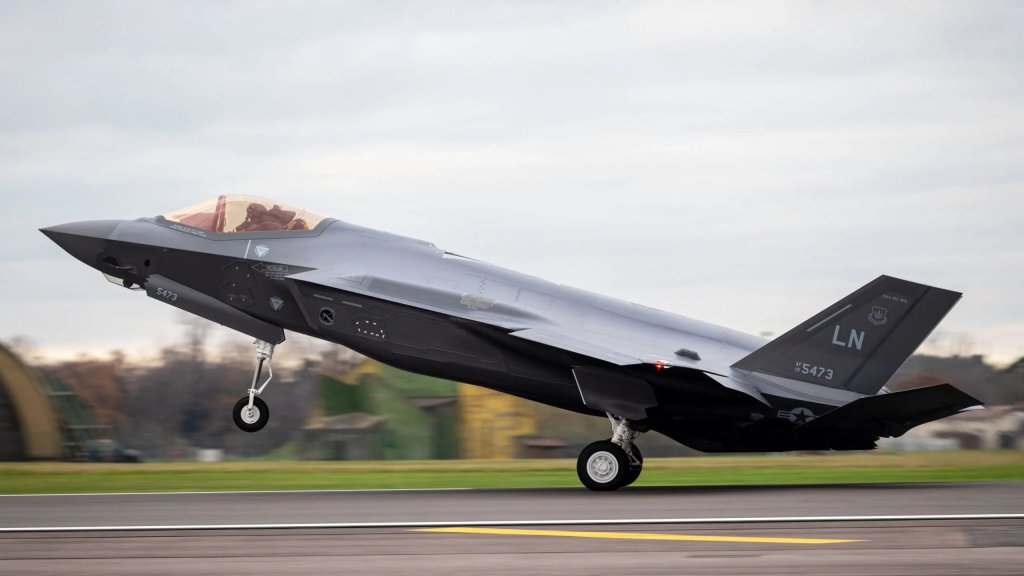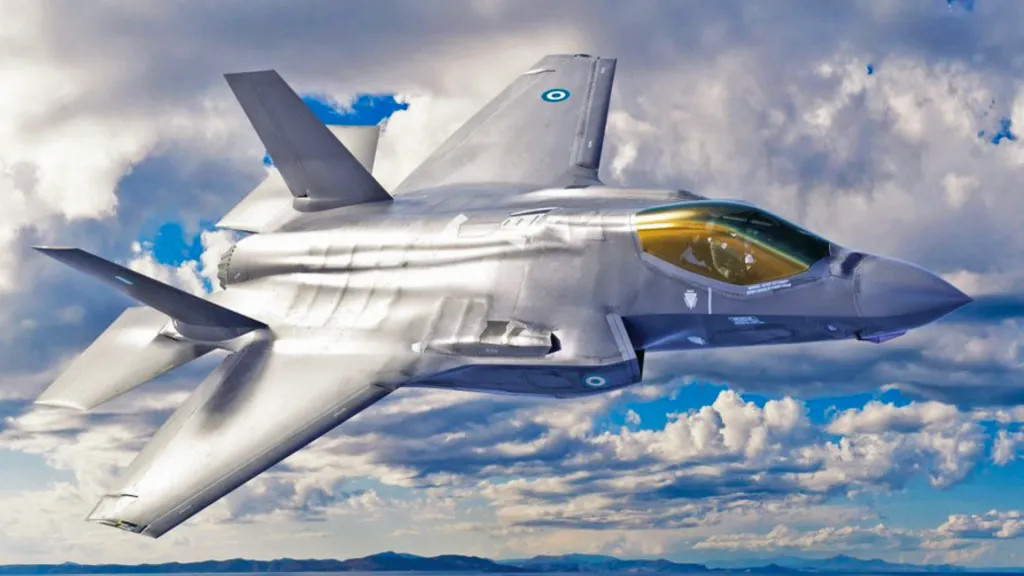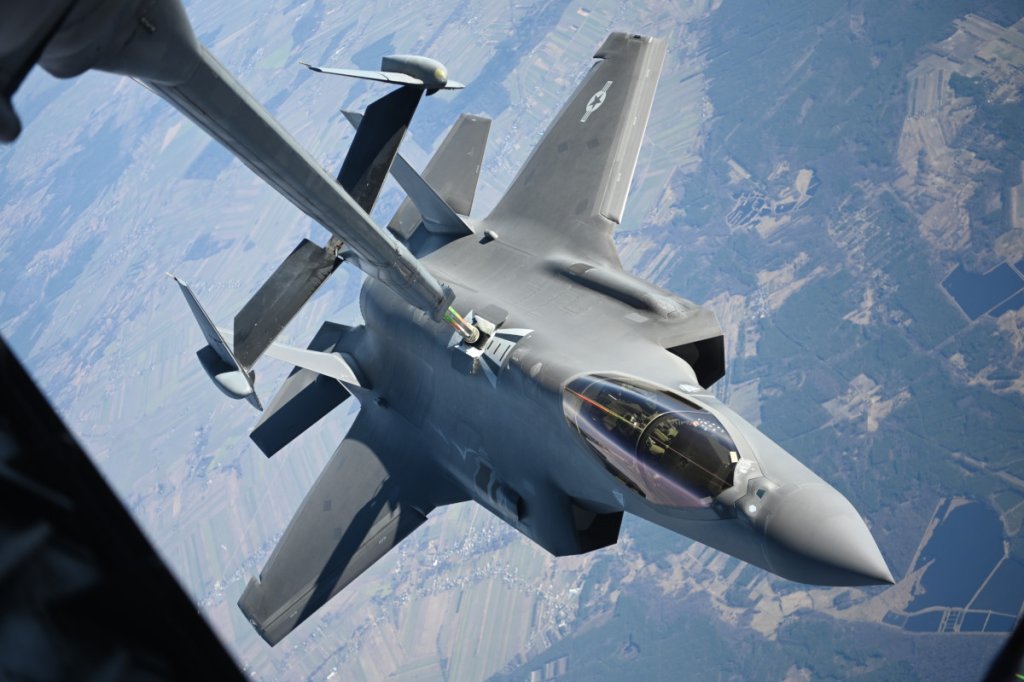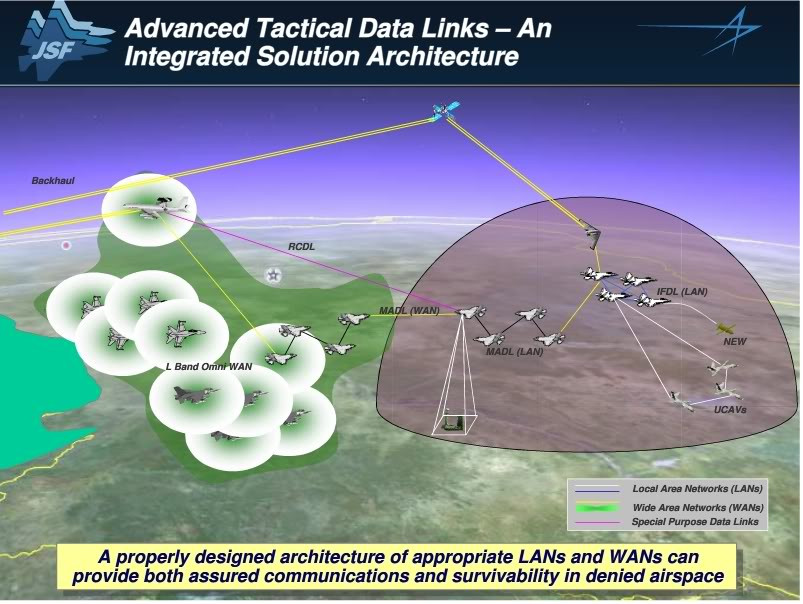NATO nations have been getting more access to especially sensitive details about the stealthy F-35 Joint Strike Fighters that are increasingly entering service across the alliance. Being ‘read into’ F-35-related Special Access Programs (SAPs) will give member countries a deeper understanding of the aircraft’s capabilities and how they can be used most effectively with other platforms, especially non-stealthy fourth-generation fighters.
U.S. Air Force Gen. James Hecker highlighted greater access too F-35 SAPs across NATO during a virtual talk hosted by the Air & Space Forces Association’s (AFA) Mitchell Institute for Aerospace Studies on Tuesday. Hecker is head of U.S. Air Forces in Europe (USAFE) and of NATO’s Allied Air Command, as well as commander of Air Forces Africa (AFAFRICA).

“You mentioned the Information Age facets of collaboration… [that] means we’ve got to have sufficient access to the mission data files and other key elements required to operate in the modern battlespace. Any thoughts you can share with us on where we stand on this and the progress that we still need to make?” David Deptula, Dean of the Mitchell Institute and a retired Air Force lieutenant general, asked Hecker during the talk.
“There’s certain F-35 Special Access Programs that now our [NATO] partners are read into and they know about,” Hecker responded, in part. “There’s fourth/fifth-gen[eration] integration, where now we can explain fifth-generation aircraft capabilities [in relation] to fourth-generation that they didn’t know before.”
“That allows us to be much more interoperable and work together,” he added.
As of April, 12 nations in the alliance had F-35s in service or on order. Greece has since moved to join this group. The Joint Strike Fighter’s manufacturer Lockheed Martin expects there to be around 600 of the jets based across Europe in total, which will include forward-deployed U.S. examples, by 2035.

Hecker did not elaborate on what F-35-related SAPs he was referring to specifically. Nearly 20 years after the first flight of the F-35A variant, much about the Joint Strike Fighter’s capabilities, especially when it comes to the aircraft sensors and electronic warfare suite, as well as its ability to fuse data from those systems and share it, remain highly classified. The forthcoming Block 4 upgrade package, which continues to suffer delays, is set to expand on the already extremely impressive sensor, electronic warfare, and communications capabilities across all three F-35 variants.
SAPs by design provide additional heavily compartmented layers of security protocols to guard information deemed especially sensitive to national security, as you can read about in more detail here. The very existence of certain SAPs can sometimes be classified. As an example, In 2021, The War Zone obtained a redacted copy of a 2010 Air Force briefing regarding the possibility of exporting F-22 Raptor stealth fighters via the Freedom of Information Act (FOIA). The briefing had originally contained information covered by multiple SAPs, the nicknames of which were also blacked out.
There is clear evidence that the U.S. military itself is still learning important new lessons about the F-35’s capabilities as the U.S. Air Force, Marine Corps, and Navy continue to fly these jets more routinely in more parts of the world. Last year, now-retired Air Force Col. Craig Andrle, whose last post was as head of the 388th Fighter Wing flying F-35As, shared a relevant anecdote with Air Force Times from his unit’s recent experience flying patrols in Europe near Russia, which The War Zone subsequently analyzed in greater detail.

“We’re looking at an SA-20. I know it’s an SA-20. Intel says there’s an SA-20 there, but now my jet doesn’t ID it as such, because that SA-20 is operating, potentially, in a war reserve mode that we haven’t seen before,” Andrle said. SA-20 Gargolye is the NATO reporting name for certain versions of the Russian-made S-300 surface-to-air missile system.
“The F-35 flagged the object for troops who updated and re-uploaded the data into the jet,” according to Air Force Times‘ report. “After that, NATO aircraft knew what they were looking at and how to geolocate it.”

Col. Andrle’s anecdote Creating more of a common operating picture and additional opportunities for data sharing among NATO F-35 operators benefits them all. Other countries’ Joint Strike Fighters’ could well run into similar situations during their sorites and the data collected could be of great interest to the U.S. military, as well.
Improving interoperability between Joint Strike Fighters and fourth-generation combat jets, among other platforms across domains, has also long been a major focus for the U.S. military. Many NATO members, including ones that are acquiring F-35s now, are set to continue flying non-stealthy fighters for the foreseeable future.
The Multifunction Advanced Data Links (MADL) found on all three F-35 variants (and no other aircraft in frontline service currently) have presented a particular logjam in the past. The War Zone just recently explored this in detail in the context of Lockheed Martin’s recent unveiling of a networked version of its Sniper targeting pod designed in part to help address this issue, writing:
“Fourth-generation combat jets and other aircraft already have the ability to communicate with F-35s via the Link16 waveform, but doing so in a two-way ‘send and receive’ fashion can leave a stealthy aircraft vulnerable.”
…
“What makes being able to communicate with F-35s via MADL so important is that it is a low probability of intercept/low probability of detection (LPI/LPD) system that also broadcasts in a highly directional way. These features make it extremely hard to detect and jam. By comparison, using omnidirectional Link16 significantly increases the chance of enemy forces detecting the otherwise stealthy Joint Strike Fighters and offers an additional way for opponents to track their movements, as well as being more susceptible to jamming.”
“MADL’s reach can be extended by ‘daisy chaining’ together multiple aircraft equipped with the system, pushing back critical data collected deep in denied airspace to more permissive airspace for further distribution and exploitation. With this new pod, two F-35s could send information from very deep inside enemy territory, relaying it from one F-35 to another F-35, or stealthy drone, and then back to a fourth-generation fighter equipped with the networked Sniper pod, which can then leverage it for its own use and/or send that information wherever else it needs to go.”

The Sniper Networked Targeting Pod, specifically, will also offer a variety of fourth-generation fighters an immensely valuable way to create their own localized miniature ‘kill webs’ that tie in other assets in the air beyond just F-35s, as well as ones down below.
When it comes to information sharing, the F-35 program is already somewhat unusual in its use of a centralized cloud-based networked backend through which mission data packages, as well as maintenance and logistics data, flows among operators. A process to transition from the initial iteration of this system, called the Autonomic Logistics Information System (ALIS), to the follow-on Operational Data Integrated Network (ODIN) remains underway.

Long-standing issues with and concerns about ALIS have already prompted certain Joint Strike Fighter operators to compartmentalize their ends of the network. Israel also notably has a unique arrangement among F-35 users that allows its jet to operate entirely independently of ALIS (or ODIN in the future), as well as for greater authority to install domestically-developed software onto the aircraft.
“The ingenious, automated ALIS system that Lockheed Martin has built will be very efficient and cost-effective,” an anonymous Israeli Air Force officer told Defense News in 2016. “But the only downfall is that it was built for countries that don’t have missiles falling on them.”
Since then, the security paradigm for NATO members has shifted significantly. Russia’s all-out war on Ukraine since 2022 continues to prompt concerns about the potential for spillover that could drag the alliance more directly into the conflict.
“When Ukraine kicked off, instead of just having them [NATO fighters] on the ground in an alert status, they were airborne. And we maintained 24/7 coverage for a while because we didn’t know the exact intentions of Russia,” Gen. Hecker said during the virtual talk on Tuesday. “We’ve kind of stood that down a little bit. So we’re not airborne 24/7.”
After Russia illegally seized the Crimean Peninsula from Ukraine in 2014, NATO adopted an enhanced air policing posture to help better protect airspace across the alliance, which remains in place today.

Hecker also said the increased access for NATO members to the F-35 SAPs was part of a larger push to share more U.S. intelligence and other information with countries in the alliance.
“Before Ukraine happened, we were sharing from our space assets 30 points of Interest a month with our NATO allies. Today we share 3,000 a month,” the Air Force’s top officer in Europe explained. “And that was a policy change where we [were] allowed to give some pictures and some SIGINT [signals intelligence] that we typically didn’t give [previously] to our NATO partners. So huge success there. There is [also] space information that we now give our partners, not when it comes to ISR [intelligence, surveillance, and reconnaissance], but on other things, that we’ve never given them [access] to before.”
“Of course, every nation is never going to share everything that they have, including the U.S., but this needs to be not only [the] U.S. doing it, [it] needs to be our allies sharing information with us, which we’re starting to see now, which is great to see,” Hecker added. “It makes us a lot more capable and it doesn’t come at much cost at all.”
When it comes to NATO’s growing F-35 fleets, more access to SAPs looks to be a particularly important and relatively low-effort path to improving the ability of the alliance’s Joint Strike Fighters to work together and with other assets like fourth-generation fighters.
Contact the author: joe@twz.com
